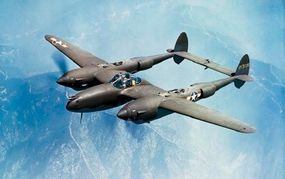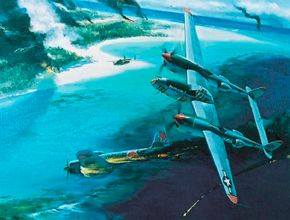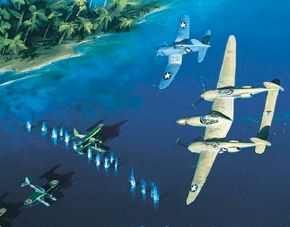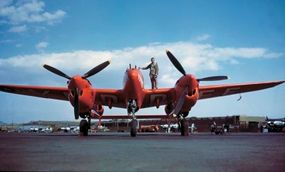During its time, the Lockheed P-38 Lightning was considered the most sophisticated aircraft Lockheed had ever built.
In February 1937, the U.S. Army Air Corps released Specification X-608, a daunting requirement that called for speed, range, and climb capabilities impossible to achieve at that time with a single-engine aircraft. In Burbank, California, a Lockheed design team led by Hall Hibbard, and assisted by a young engineer named Clarence "Kelly" Johnson, immediately began a series of designs that would culminate in the contract-winning XP-38. Jim Gerschler became project engineer on the aircraft.
Advertisement
The XP-38 (it was many months before it was called the Lightning) was of an extraordinarily advanced conception, an all-metal, midwing monoplane with twin Allison engines using General Electric turbo-superchargers, a central nacelle for the pilot and armament, contra-rotating propellers, twin-booms and rudders, and a tricycle landing gear.
Nothing like it had ever been seen before, and it would be the only single-seat, twin-engine aircraft to reach mass production status during World War II. The distinctive sight and sound of the Lockheed P-38 Lightning would make it one of the best-known aircraft of the war.

First flown on January 27, 1939, by one of its staunchest advocates, Air Corps 1st Lieutenant Ben Kelsey, the prototype XP-38 made national headlines when it crashed on a transcontinental record-setting attempt. Nevertheless, imminent war in Europe accentuated the need for the Lockheed P-38 Lightning, and production orders began to flow in. By war's end, a total of 10,037 P-38s had been built. As it was much more modern than the Curtiss P-40, there was a great demand in every theater of war for the twin-engine fighter.
Move on to the next section to find specifications for the Lockheed P-38 Lightning.
For more information on airplanes, check out:
Advertisement


